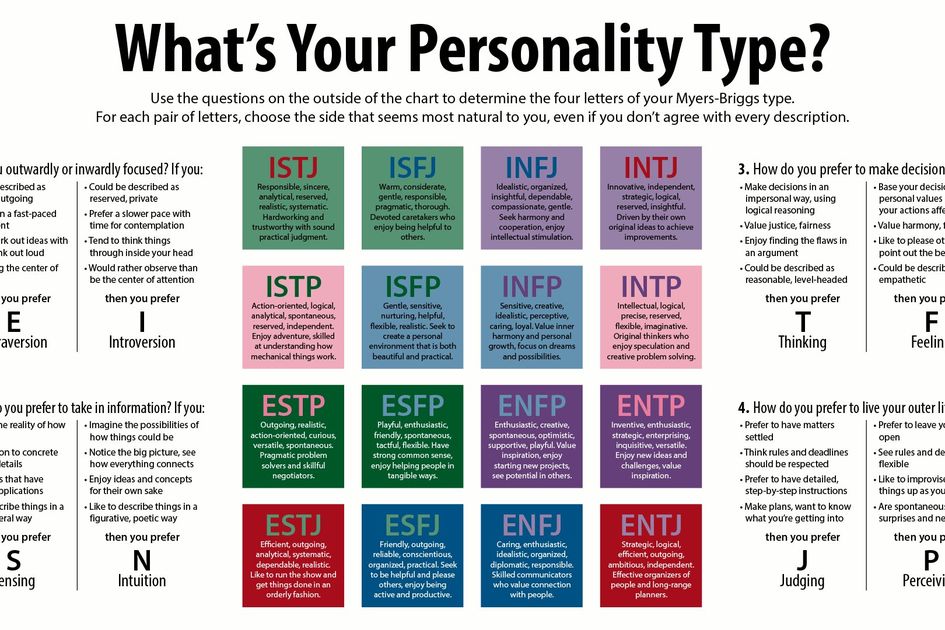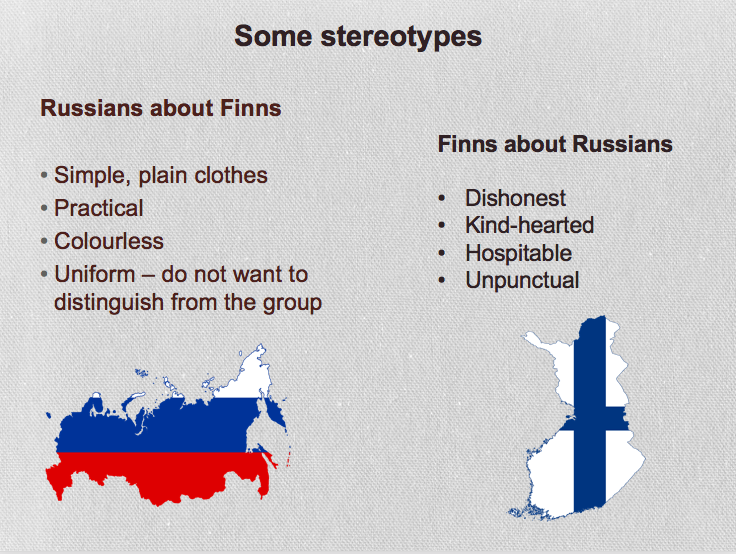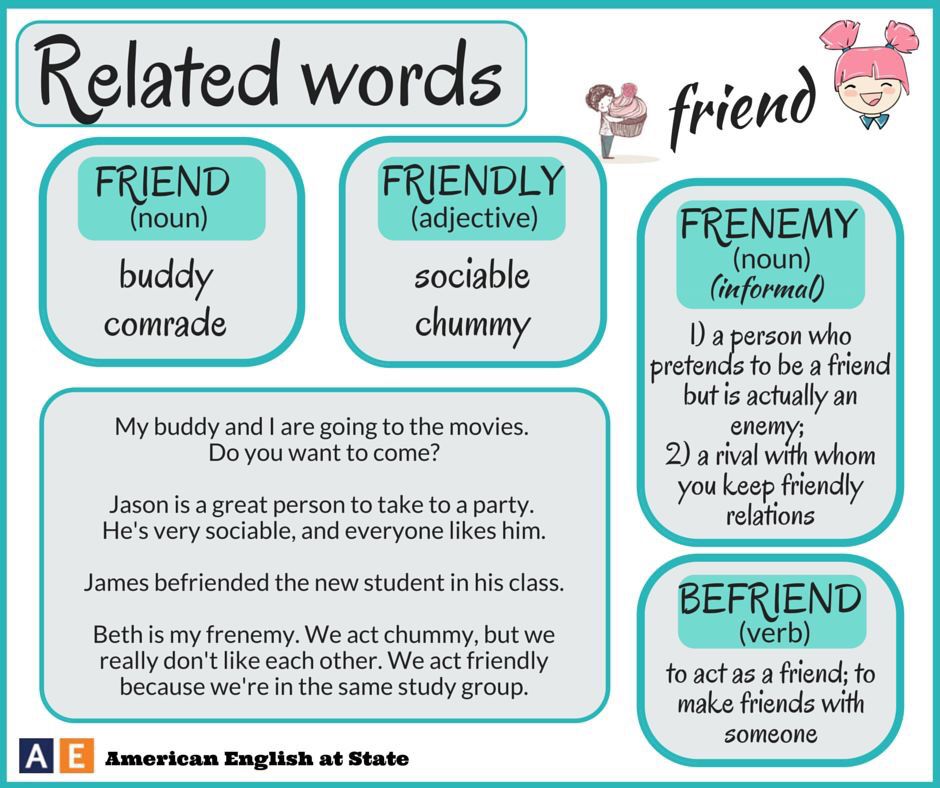Inside out personality types
Animated MBTI - Inside Out MBTI
Inside Out MBTI
Riley — ENFP
“ I… I know you don’t want me to, but I miss home. I miss Minnesota. You need me to be happy, but I want my old friend, and my hockey team. I wanna go home. Please don’t be mad.”
Riley is an imaginative girl who strongly values her family and friends. She is sensitive and fun-loving, enjoying her activities with others and her time with close friends.
Joy — ENFJ
“Oh, it’s that time in the twisty tree, remember? The hockey team showed up and Mom and Dad were there cheering. Look at her, having fun and laughing. It’s my favorite.”
Joy is keenly aware of the other emotions and how to help them all work together. Her main focus is around others—Riley, first of all, but also the other emotions. Throughout trying situations that one could easily see as hopeless, Joy never loses her positivity and ability to motivate others and keep them going too.
She also follows her one end goal unfailingly through each trial, always looking ahead.
Sadness — INFP
“Crying helps me slow down and obsess over the weight of life’s problems.”
A melancholic character, Sadness is often too flooded in her own emotions and thoughts to feel she can even function in the world around her. She can get stuck in her views and ways of dealing with the world, but her curiosity also drives her and she eventually becomes an a vital part of Riley’s growing personality.
Fear — ISFJ
“All right! We did not die today, I call that an unqualified success.”
The unfamiliar is uncomfortable territory for Fear. He is great help in keeping Riley safe, and is an essential part of her mind. He’s primarily guided by feeling, and though he doesn’t head the controls much, he’s quite capable of stepping in to save Riley when he needs to.
Disgust — ESFJ
“I’d tell you, but you’re too dumb to understand. ”
”
Disgust has her opinions, and she’s not afraid to make them clear. She focuses in the sensory world, keeping Riley safe from dangerous situations, both physical and social. She’s clearly comfortable in the areas of social situations, including fashion. She is good at being in charge, enjoying helping Riley have the best days she can.
Anger — ESTJ
“Congratulations San Francisco, you’ve ruined pizza! First the Hawaiians, and now YOU!”
Anger takes charge readily when things aren’t going as he’d like. His instinct is to take control. He doesn’t always have the best foresight, acting sometimes more on the present moment’s situation. He’s a good decision maker, and though his temper can blow up rather suddenly, he can also make a good leader.
Bing Bong — ENFP
“Take her to the moon for me. Okay?”
Bing Bong is a character of imagination and exciting possibilities. As Riley grows up, he is less a part of the real world she grows into, and he fades away from memory. He is playful and kindhearted, and nostalgic for the imaginative adventures of Riley’s childhood that are fading away as well.
He is playful and kindhearted, and nostalgic for the imaginative adventures of Riley’s childhood that are fading away as well.
inside out inside out mbti animated mbti myers briggs riley enfp joy enfj sadness infp fear isfj disgust esfj anger estj bing bong quotes
21 December, 2016
Google+
MBTI: Inside Out | Zombies Ruin Everything
Emotions that have emotions? Muh mind is blown! Surprise, Disney and Pixar are still breaking records together with “heartwarming comedies that are fun for the whole family!” And it’s not like it’s all just hype either, their work is pretty much always solid.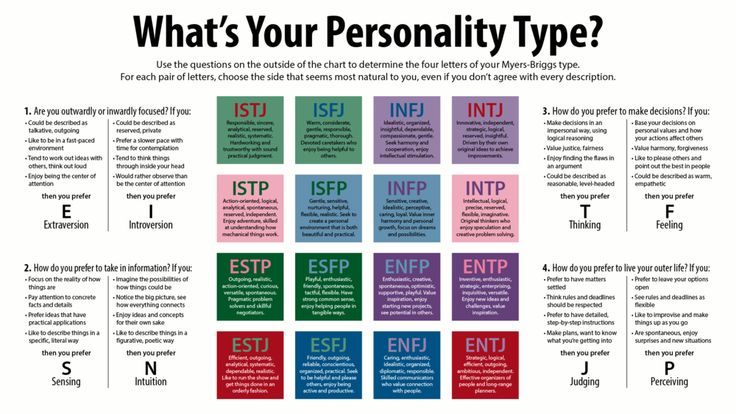 It should be, right? They spend enough money to afford a small army.
It should be, right? They spend enough money to afford a small army.
Now we explore the feelings of the feelings. It wasn’t too hard to get a bead on these characters given that the personification of feelings are going to have their own feelings expressed pretty boldly.
Joy- ENFP
Happy go lucky to the point of not understanding others, there’s nobody better lead around a bunch of other feelings. Considering the others all lean toward the negative side in some way, Joy being at the controls is what keeps the story from being a downer the entire time. This is much like the ENFP, whose goal in life is to be the most interesting, while doing the most interesting things, with the most interesting people.
Which isn’t to say that they’re about status, but rather making the most out of their life. Joy and the other feelings don’t really get what Sadness is doing there in Riley’s head and nobody is more determined than Joy to keep her away from the controls of Riley’s emotions.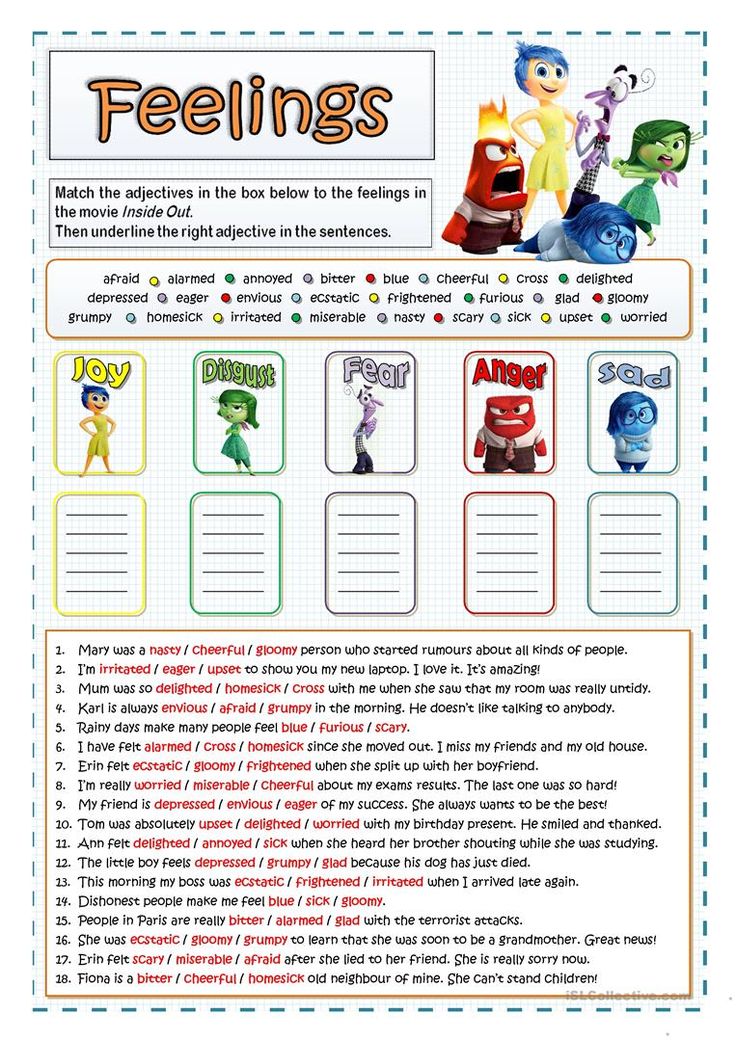 ENFPs can be similar in the sense that they’ll often bounce back and forth from one activity to another, hoping to fill enough of their time throughout the day without experiencing the negative side of life.
ENFPs can be similar in the sense that they’ll often bounce back and forth from one activity to another, hoping to fill enough of their time throughout the day without experiencing the negative side of life.
I’ve called ENFPs the ultimate extrovert before and the title still fits. While ENFPs need their alone time like anyone else would, it seems that they need less time to recharge than anyone. Notice that Joy is the driving force of Riley as well as the plot, and it’s her reluctance to accept that Sadness is a also part of Riley also that keeps necessary changes from happening. Again, similar to the ENFP’s way of often refusing to accept necessary aspects of life they deem uninteresting or dull in favor of excitement and happiness.
Sadness- INFP
The steady hand they never knew they needed, Sadness hasn’t really had much a role in Riley’s life until the events of the film take place. Really, what does an 11 year old need with that feeling? Aside from not getting dessert instead of dinner, there’s not much use for her.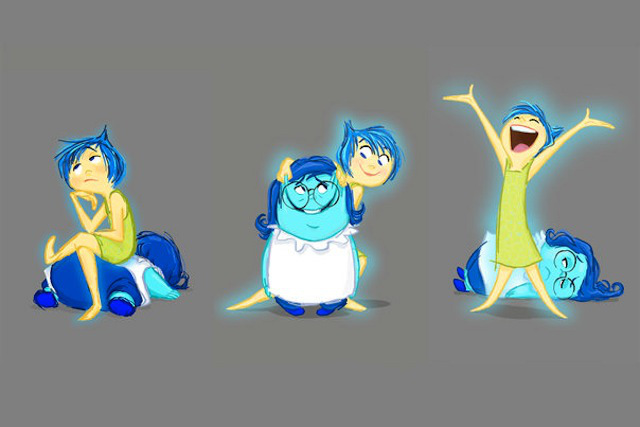 But once Riley and her family move away from her family and friends, Riley’s getting a hands-on education from Sadness.
But once Riley and her family move away from her family and friends, Riley’s getting a hands-on education from Sadness.
INFPs aren’t always grey and dismal, but they’ve got a reputation for being that way all the same. It could be due to the “tortured artist” image so many famous INFPs deservedly acquired during their career. INFPs lead with Fi, followed by Ne. Putting it shortly, the depths of their own feelings, beliefs and ideas are all going to be explored thoroughly. It’s from this that they can appear emotionally volatile or unstable to those around them who aren’t as keen on emotional self-awareness nor comfortable with their own feelings, Joy being the “person” in this instance.
One reason for INFPs appearing the way that they do is that they feel the strong need to live a life that’s conformed to their own values and from this comes emotional honesty. So when you meet an INFP in a more negative state, it’s going to show even if they think they’re hiding it. If they’re happy, it’s going to show. Point is, though they’re definitely introverts, their mood will be clear. A lot of the humor in the film comes from Sadness’ seemingly inability to see the positive side of anything and it definitely shows.
If they’re happy, it’s going to show. Point is, though they’re definitely introverts, their mood will be clear. A lot of the humor in the film comes from Sadness’ seemingly inability to see the positive side of anything and it definitely shows.
She is Sadness, after all. Somebody’s got to carry the burden and INFP fits the bill.
Fear- ISFJ
This was the most difficult emotion to pinpoint since, being a cartoon, the characters tend to be more expressive than you would need for a live-action film. So Fear’s emotions being worn on his sleeve seemed like a more negative side of Fe. And he is, in a way, a ISFJ’s auxiliary function is Fe. But with Si being dominant can easily revert the user to the paranoid as Fear seems to thrive from. Being Fear, he’s only got so much of a choice doesn’t he?
Interesting that Fear is at the controls during Riley’s dreams. It keeps to the idea that even though she’s sleeping, Fear is subtly in control because of course, stronger emotions like Joy and Sadness are absent.
But the ISFJ and Fear most resemble the other in this case due to the ISFJ’s way of often acting under feeling more than anything else. It’s a demanding world out there and while ISFJs work best under someone, this can often give people the idea that they need to push around the quieter ones. You wouldn’t call the ISFJ spineless as a type, but users can often have difficulty standing up for themselves when they should given their natural state of keeping their head down and getting their job done.
In Fear’s case, he doesn’t normally get pushed around though he’s certainly not at the controls when things are going the way they’re supposed to. And thank God, because there’s only so much Riley can handle.
Disgust- ESFP
It’s all in the attitude. Without having really thought about it, Disgust seems like the least necessary emotion for a person to have. But at the same time, as humans, we get disgusted pretty often and sometimes it’s disgust alone that keeps us out of trouble. So when Fear and Disgust are at the controls, you can bet Riley is staying away from whatever it is that’s made them take control in the first place.
So when Fear and Disgust are at the controls, you can bet Riley is staying away from whatever it is that’s made them take control in the first place.
Disgust embodies the perpetual attitude of a cool teenage high-school girl, stereotypically speaking, an ESFJ or ESFP. ESFPs aren’t permanently disgusted with humanity normally, but it’s not out of character for them to act displeased or annoyed with so much of society that either bores them or annoys them. This can easily appear superficial to other types that don’t focus on the same things.
And that’s not to say the ESFP isn’t shallow, but as far as they see it, things like style and taste are representative of who a person is. So parting your hair down the middle, tucking your t-shirt into your jean shorts and wearing high socks could cause any human to cringe but the ESFP won’t be able to help themselves in either cracking up or vomiting. Their blasé attitude could be to many ESFPs what the sad stereotype is to INFP- carrying truth without being the whole truth.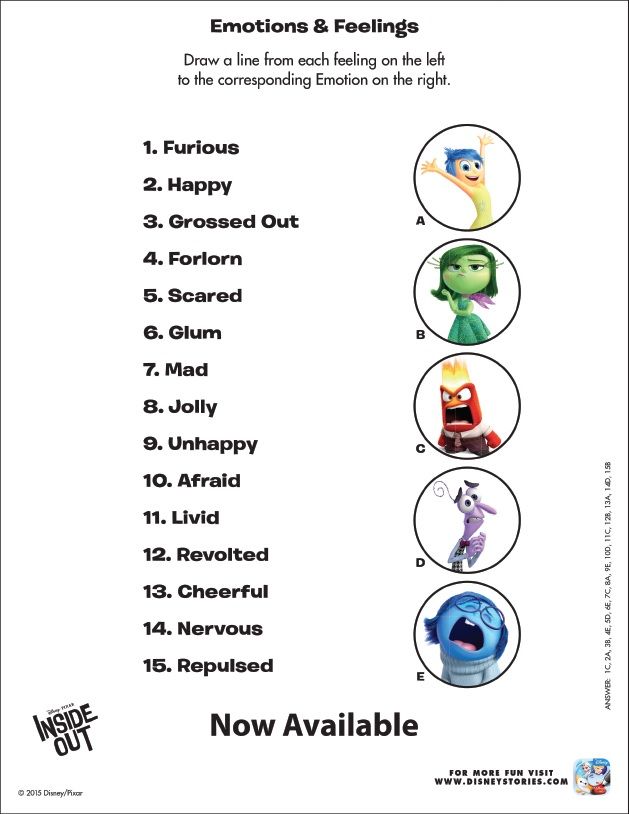
Anger- ESTJ
What other options are there for the hot and cold, tie-wearing, newspaper reading feeling? Lewis Black fits as the voice of course, and it’s interesting how much more intense Anger was than what Riley was able to express when he was at the controls. It speaks to how crazy things get in our mind but what little shows, even at our worst.
“I say we lock ourselves in our room and use that one swear word we know. It’s a good one”
ESTJs, like ESFPs being disgusted, aren’t always angry but man when they are, it’s happened fast over a very short period of time. Their emotions can seem so extreme it might even leave those around them wondering if the ESTJ is joking or not considering how casual things might have been just a few seconds earlier. While the negative side of this is clear, the positive side of the ESTJ is exemplified in his willingness to just make a decision.
This is part of the reason ESTJs end up as leaders in their workplace, or other socially-inclined functions. The ESTJ’s dominant Te and auxiliary Si tells them that they need to do something and to do it the way they know. If you felt this way way all the time, you’d be pretty decisive too. And it’s this decisiveness that puts them in charge and has others either following or following and muttering about much they don’t like what’s happening. Anger didn’t have much control of Riley but, like Fear, there’s only so much of him that can be handled at one time.
The ESTJ’s dominant Te and auxiliary Si tells them that they need to do something and to do it the way they know. If you felt this way way all the time, you’d be pretty decisive too. And it’s this decisiveness that puts them in charge and has others either following or following and muttering about much they don’t like what’s happening. Anger didn’t have much control of Riley but, like Fear, there’s only so much of him that can be handled at one time.
Like this:
Like Loading...
This entry was posted on 09/01/2015 at 1:23 am and is filed under MBTI Artisans, MBTI Guardians, MBTI Idealists, MBTI Stuff, MBTI Whatever with tags enfp, esfp, estj, infp, Inside Out, isfj, mbti in fiction. You can follow any responses to this entry through the RSS 2.0 feed. You can leave a response, or trackback from your own site.
Everything can be turned inside out. Finding Your Calling [How to Discover Your True Talents and Make Life Meaningful]
In 1921, Carl Jung published Psychological Types, which had a great influence not only on the development of psychology as a science, but also on popular culture in general.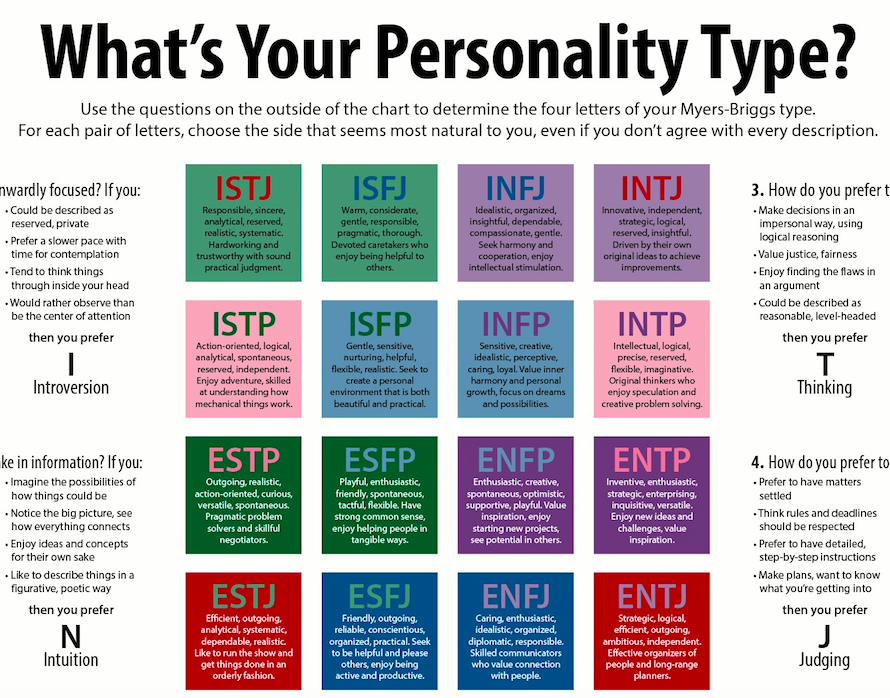 The famous psychologist's book is still one of the most influential works on personality theory. Carl Jung's work was based on the results of more than twenty years of research in psychology. His goal was not so much to classify patterns of behavior as to understand the typical patterns of people's attitudes to the world around them. It was Jung who formulated the concept of introversion and extraversion, which has become one of the cornerstones of modern psychology.
The famous psychologist's book is still one of the most influential works on personality theory. Carl Jung's work was based on the results of more than twenty years of research in psychology. His goal was not so much to classify patterns of behavior as to understand the typical patterns of people's attitudes to the world around them. It was Jung who formulated the concept of introversion and extraversion, which has become one of the cornerstones of modern psychology.
According to Jung, introversion and extraversion show the orientation of the individual in relation to the surrounding world. An introvert is more attuned to his inner world, while an extrovert is oriented to the world around him. Introverts usually include people who are prone to doubt and reflection, immersed in themselves and having a shy, contemplative nature. Extroverts are usually called people who have an open and sociable nature; their nature seems to be directed outward. They easily adapt to any situation, quickly form new attachments and are not prone to any doubts and fears.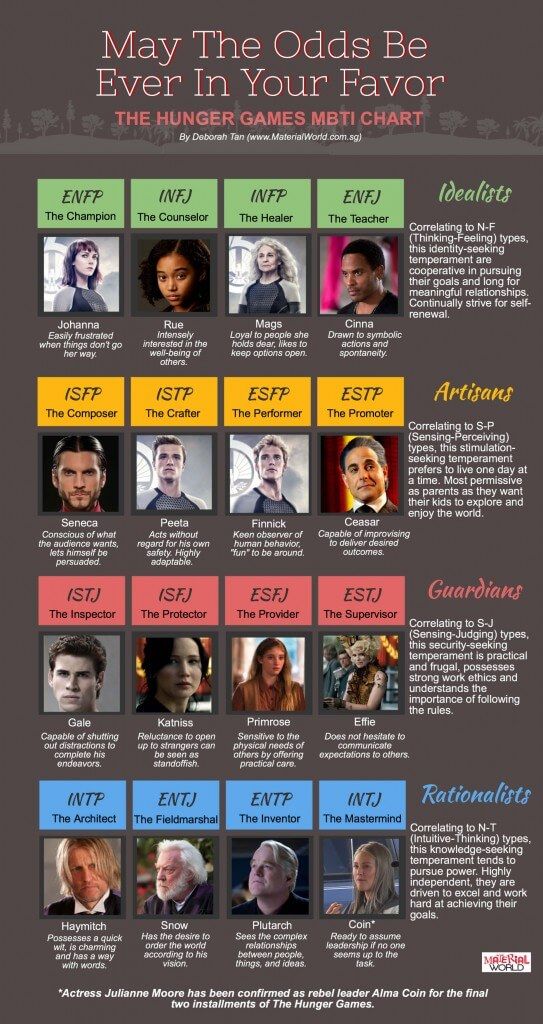 They often rush headlong into the unknown without thinking about what lies ahead of them. This is how Carl Jung himself described introverts and extroverts. In an effort to be as objective and impartial as possible, he did not give preference to either introverts or extroverts. Moreover, the psychologist argued that "in its pure form" it is impossible not to meet either one or the other type of personality. In each of us there is something from an introvert and an extrovert: "... the same personality will seem to us both introverted and extroverted at the same time, and we will not be able to immediately determine which installation is aimed at a more valuable function."
They often rush headlong into the unknown without thinking about what lies ahead of them. This is how Carl Jung himself described introverts and extroverts. In an effort to be as objective and impartial as possible, he did not give preference to either introverts or extroverts. Moreover, the psychologist argued that "in its pure form" it is impossible not to meet either one or the other type of personality. In each of us there is something from an introvert and an extrovert: "... the same personality will seem to us both introverted and extroverted at the same time, and we will not be able to immediately determine which installation is aimed at a more valuable function."
In addition to these two personality traits, Jung points to four basic mental functions.
• Thinking is the process of conscious reflection.
• Feeling is a process of value judgments.
• Sensation - the perception of the world through the senses.
• Intuition is the process of unconscious perception.
Combining the above two attitudes and the four basic mental functions, Jung proposed the existence of eight basic personality types. True, he cautiously noted that the classification system he proposed did not provide an exhaustive explanation of the whole variety of individual psychological differences. However, according to him, he did not set himself such a task, because otherwise every person would be doomed to bear a lifelong stigma. Jung saw his system mainly as a tool for identifying similarities and differences between people, which was often required for the analysis, diagnosis and treatment of diseases. The scientist did not at all intend to develop a certain universal scheme suitable for widespread practical application.
Be that as it may, Jung's typology is used as the basis for various approaches to the classification of personality types that are used in business, education, mentoring and career counseling. The most famous among them is the Myers-Briggs personality type indicator (MBTI). This system was developed in the 1940s by Katherine Briggs and her daughter Isabella Myers-Briggs based on the work of Jung. The MBTI is based on Jung's typology, as well as some other distinguishing properties and characteristics; in total, sixteen personality types are defined. The MBTI testing system is designed to help determine your personality type according to four scales.
This system was developed in the 1940s by Katherine Briggs and her daughter Isabella Myers-Briggs based on the work of Jung. The MBTI is based on Jung's typology, as well as some other distinguishing properties and characteristics; in total, sixteen personality types are defined. The MBTI testing system is designed to help determine your personality type according to four scales.
• Extraversion (E) - introversion (I).
• Sensory (S) - intuition (N).
• Thinking (T) - Feeling (F).
• Judgment (J) - Perception (P).
The result is one of sixteen four-letter codes that describes your personality type. (In case you're wondering, my type is INFP.) The developers of the MBTI claim that these sixteen types cover the entire variety of personality types and that such an indicator is reliable and can be successfully applied in practice. At the same time, the fact that the personality of each of us is unique and unrepeatable is not denied at all. “If you gather a hundred people with the same personality type in one room, it turns out that they are all very different from each other, if only because they have different parents, genes, life experiences, interests, etc. However, they really have a lot in common."
However, they really have a lot in common."
MBTI is based on the assumption that life and career choices should be based on an adequate understanding of one's abilities, interests and values. Psychologists who use this typology in practice call abilities, interests, and values the Big Three. However, personality characteristics can change over time. As you gain new experience at work, you also acquire new skills; with each passing year you have new interests, and you forget some of the old ones. Often, over the years, people have new life goals.
Personality type does not at all determine ability and does not predict success in life, it only "helps to determine what motivates and energizes each of us more as a person and gives us the opportunity to find incentives in the work on which we have chosen."
In my book The Vocation, I argued that each of the classification systems, including the MBTI, has certain shortcomings. All classifications should be treated critically, without trying to squeeze yourself into the framework of any of them. If you treat them as ways to generate questions and ideas that concern you personally, they can be of great benefit. If you try to use them to label yourself in one way or another, you will get nothing but harm from it.
If you treat them as ways to generate questions and ideas that concern you personally, they can be of great benefit. If you try to use them to label yourself in one way or another, you will get nothing but harm from it.
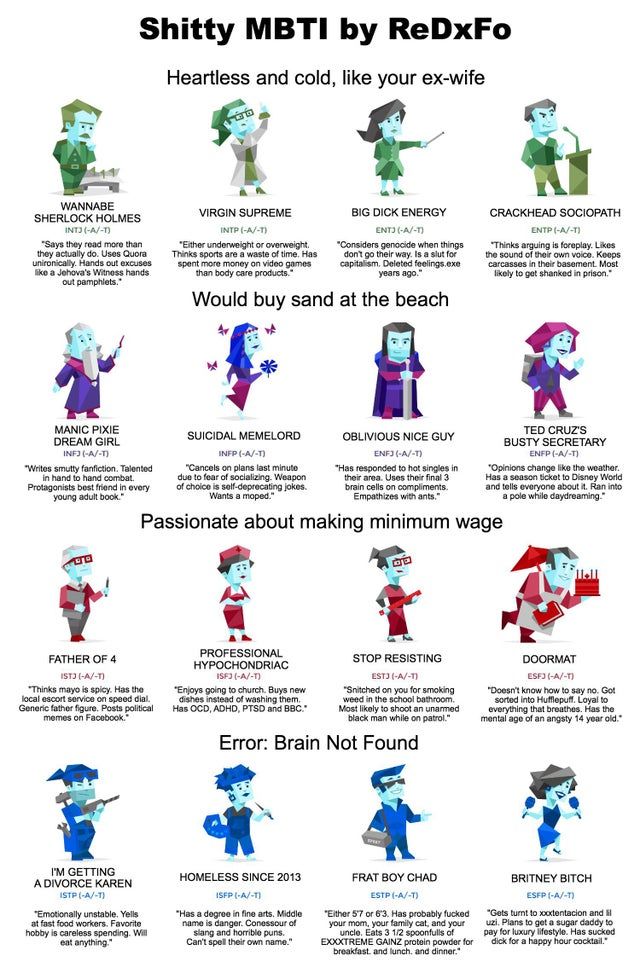 If, with autism, the patient put himself in a "shell", "shackled" in a castle impenetrable to outsiders, then with regressive syntonicity, figuratively speaking in the words of one allegorically thinking psychiatrist, he shows his naked ass to all mankind. The point is not only in super-frankness, disclosure of one's intimate inner experiences. Autism inside out can extend to thoughts, judgments, communication, actions of a person. Let's start with actions.
If, with autism, the patient put himself in a "shell", "shackled" in a castle impenetrable to outsiders, then with regressive syntonicity, figuratively speaking in the words of one allegorically thinking psychiatrist, he shows his naked ass to all mankind. The point is not only in super-frankness, disclosure of one's intimate inner experiences. Autism inside out can extend to thoughts, judgments, communication, actions of a person. Let's start with actions. 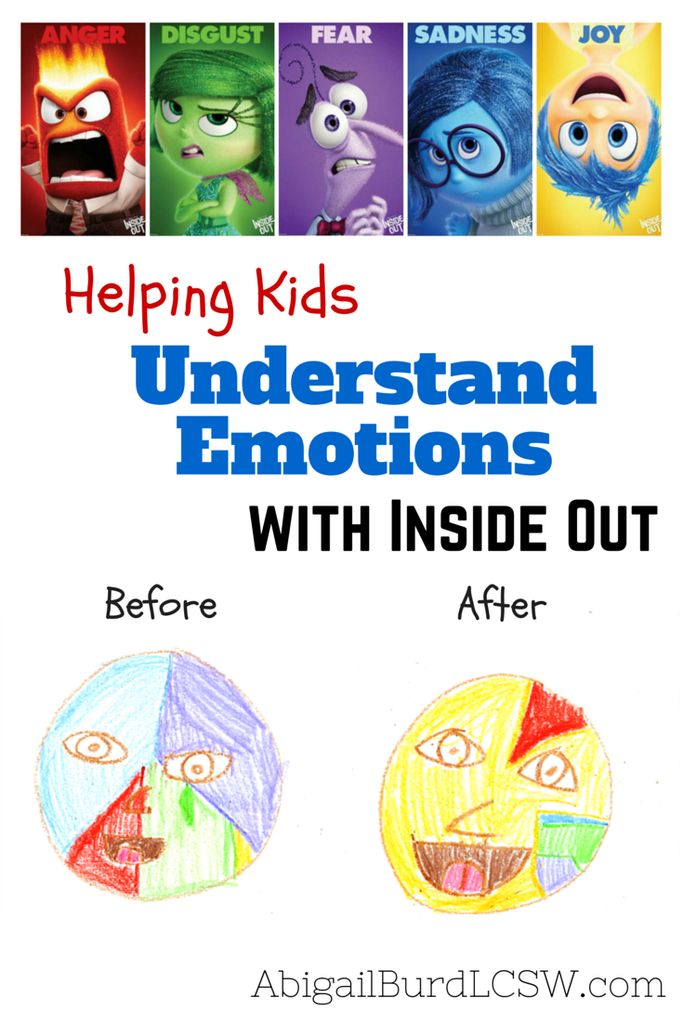 Groups of girls and boys separated themselves into groups and hung a sheet between them. One student of the same age, the same course as the rest, not wanting to be crowded, came out from behind an impromptu screen and with the words that nothing human was alien to him, first took off his trousers, family shorts, and then pulled them over naked body stocked up in advance swimming trunks and dance leotards. There had been talk about the shamelessness of this student before, but after this incident, most of the group began to shun the young man, which greatly surprised him.
Groups of girls and boys separated themselves into groups and hung a sheet between them. One student of the same age, the same course as the rest, not wanting to be crowded, came out from behind an impromptu screen and with the words that nothing human was alien to him, first took off his trousers, family shorts, and then pulled them over naked body stocked up in advance swimming trunks and dance leotards. There had been talk about the shamelessness of this student before, but after this incident, most of the group began to shun the young man, which greatly surprised him.  Six months after these events, the young man was hospitalized with exacerbation of the endogenous process.
Six months after these events, the young man was hospitalized with exacerbation of the endogenous process.  At the dacha, the bath was heated all the time. At the direction of Bokiy, after a fair amount of drinking, they went to the bathhouse in batches, where they openly engaged in group sexual debauchery ..., drunken people smeared the genitals with paint and mustard. Those who slept while drunk were buried alive. Another member of the commune reports during interrogation: “Each member of the commune was obliged “at the meal” to drink the first five shots of vodka. It was also obligatory to visit the common bath for men and women. All members of the commune took part in this, including the two daughters of Bokia. This was called in the charter of the commune - the cult of approaching nature. The participants were also engaged in the cultivation of the garden with the obligatory presence of men and women on the territory of the dacha in the naked and half-naked form ... "[63].
At the dacha, the bath was heated all the time. At the direction of Bokiy, after a fair amount of drinking, they went to the bathhouse in batches, where they openly engaged in group sexual debauchery ..., drunken people smeared the genitals with paint and mustard. Those who slept while drunk were buried alive. Another member of the commune reports during interrogation: “Each member of the commune was obliged “at the meal” to drink the first five shots of vodka. It was also obligatory to visit the common bath for men and women. All members of the commune took part in this, including the two daughters of Bokia. This was called in the charter of the commune - the cult of approaching nature. The participants were also engaged in the cultivation of the garden with the obligatory presence of men and women on the territory of the dacha in the naked and half-naked form ... "[63]. 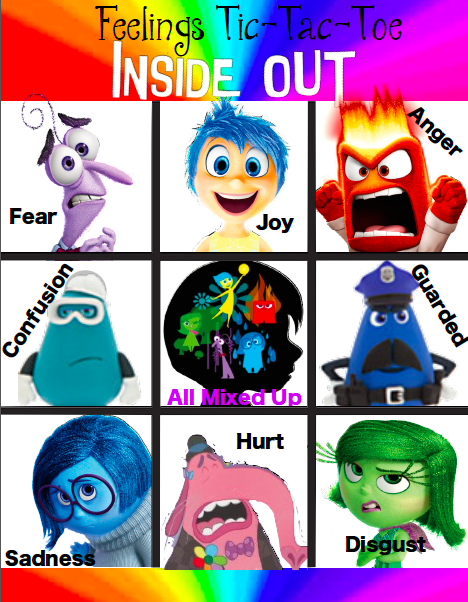 Secondly, all participants in this "Dachnaya Commune" are well aware of, i.e. they are critical of their behavior and keep information about their commune secret, and only during the great purge do they testify about the true face of the leaders of the Cheka. In contrast, our patients with regressive syntonicity sincerely believe that they are not doing anything illegal, immoral, wrong, and are very surprised at the reaction of people around them to their actions. So, a small child, 3-4 years old, calmly takes off his pants at a bus stop and recovers in front of people, not suspecting that he is doing something that is not accepted in a civilized society. E. Kraepelin has a wonderful example when he describes a bus driver who stopped the car in the middle of the flight, took off his shoes, hung his socks on the radiator, sat on the sidewalk, lit a cigarette and told the passengers that he had the right to rest. In one small example, the experienced eye of a brilliant psychiatrist immediately fixes both autism inside out, and emotional decline, and the beginning of REP.
Secondly, all participants in this "Dachnaya Commune" are well aware of, i.e. they are critical of their behavior and keep information about their commune secret, and only during the great purge do they testify about the true face of the leaders of the Cheka. In contrast, our patients with regressive syntonicity sincerely believe that they are not doing anything illegal, immoral, wrong, and are very surprised at the reaction of people around them to their actions. So, a small child, 3-4 years old, calmly takes off his pants at a bus stop and recovers in front of people, not suspecting that he is doing something that is not accepted in a civilized society. E. Kraepelin has a wonderful example when he describes a bus driver who stopped the car in the middle of the flight, took off his shoes, hung his socks on the radiator, sat on the sidewalk, lit a cigarette and told the passengers that he had the right to rest. In one small example, the experienced eye of a brilliant psychiatrist immediately fixes both autism inside out, and emotional decline, and the beginning of REP.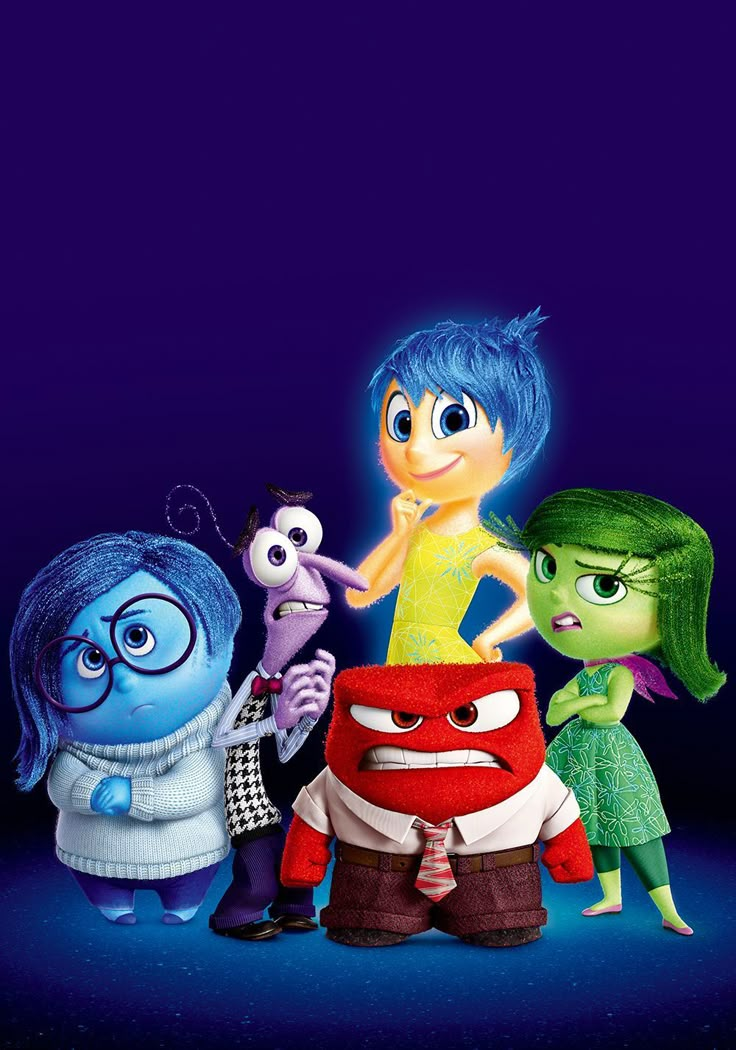
 ”
”  And all this without any painful elevation or change in mood.
And all this without any painful elevation or change in mood. 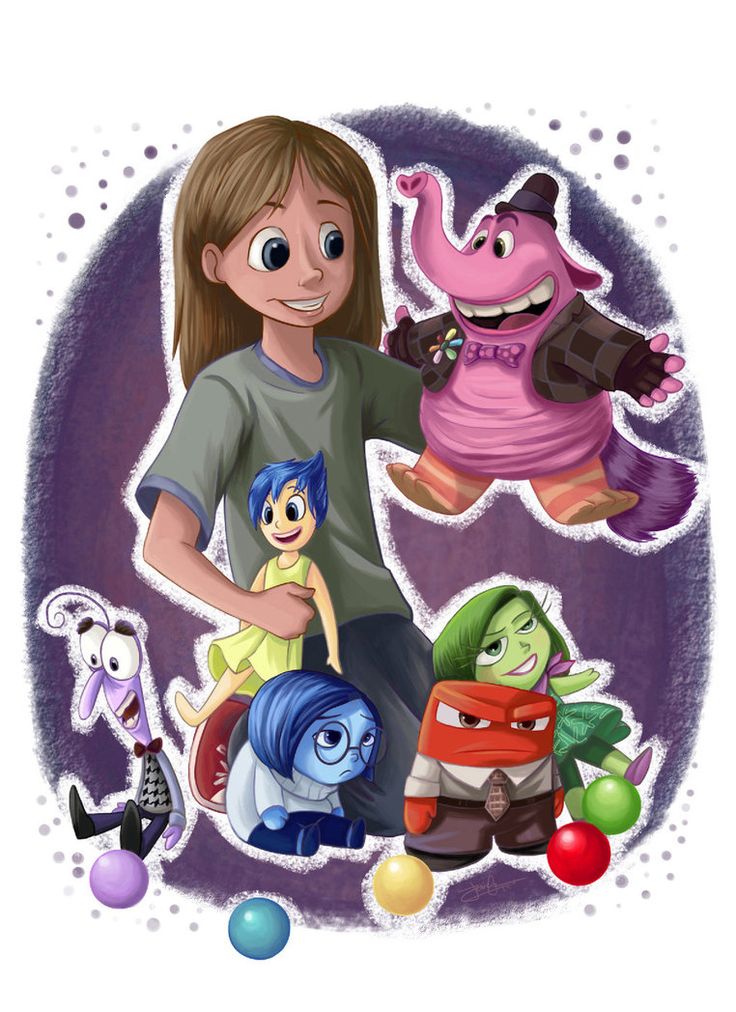 Where fate throws, so it will be. With which company the patient contacts, he immediately learns its habits. A person turns into plasticine, continually changing the shape of a toy molded by someone's hands. The essence of this state is in painful passivity, in the disappearance of the pre-morbid core of the personality, the stable core. We have already written about the fact that drift must be differentiated from an unstable personality, within the framework of psychopathy, with what is popularly called a “non-independent person”. A weak-willed person is soft wax in the hands of fate and stronger personalities, a "six" in its innate nature. Drift, on the other hand, is an acquired, acquired disharmony of the personality, it is the result of a painful break.
Where fate throws, so it will be. With which company the patient contacts, he immediately learns its habits. A person turns into plasticine, continually changing the shape of a toy molded by someone's hands. The essence of this state is in painful passivity, in the disappearance of the pre-morbid core of the personality, the stable core. We have already written about the fact that drift must be differentiated from an unstable personality, within the framework of psychopathy, with what is popularly called a “non-independent person”. A weak-willed person is soft wax in the hands of fate and stronger personalities, a "six" in its innate nature. Drift, on the other hand, is an acquired, acquired disharmony of the personality, it is the result of a painful break.  He was famous for his oratory, invariably won verbal duets with "obscurantist priests." At the age of 19, for no reason, he began to skip school, occasionally drinking. This period in his life coincided with the collapse of communism in the country, the dissolution of the CPSU and the Komsomol. Having found himself without work, he hung out on the street for half a year, got acquainted with a group of “brothers” from nearby houses. He began to drink a lot, temporary girlfriends appeared, he was twice prosecuted, but got off with a slight fright, receiving a suspended sentence 2 times. He was known among the brothers as a "professor", he knew how to chat up anyone, justifying the commission of theft from a "philosophical point of view" as a victory of justice. At the age of 21, while visiting the grave of his grandfather, he accidentally met a group of strange girls and boys. They walked between the graves and marked the crosses with some signs. New acquaintances turned out to be Satanists.
He was famous for his oratory, invariably won verbal duets with "obscurantist priests." At the age of 19, for no reason, he began to skip school, occasionally drinking. This period in his life coincided with the collapse of communism in the country, the dissolution of the CPSU and the Komsomol. Having found himself without work, he hung out on the street for half a year, got acquainted with a group of “brothers” from nearby houses. He began to drink a lot, temporary girlfriends appeared, he was twice prosecuted, but got off with a slight fright, receiving a suspended sentence 2 times. He was known among the brothers as a "professor", he knew how to chat up anyone, justifying the commission of theft from a "philosophical point of view" as a victory of justice. At the age of 21, while visiting the grave of his grandfather, he accidentally met a group of strange girls and boys. They walked between the graves and marked the crosses with some signs. New acquaintances turned out to be Satanists. A week later, after reading a few books and listening to a couple of CDs, he joined this group, began to attend gatherings, earnestly perform the prescribed rituals. When meeting with old acquaintances, he surprised them with his new vocabulary and views. Former Komsomol members, however, like the brothers, shied away, hearing verbose beliefs in the imminent arrival of Satan, examples of the decay of the spirit of society and the souls of modern people. He was prosecuted for desecration of graves, spent several months in a detention center, where he met a pacifist guy who was taken there for a couple of days for maliciously evading military service. Three days later, after a long conversation with a cellmate, he began to pray to Christ, learned the texts and motives of new chants. Relatives did not recognize the Satanist who returned from prison five months later. Noble speech, prayers several times a day. Convincing speeches that God should be in the heart, that icons and churches contradict Christ.
A week later, after reading a few books and listening to a couple of CDs, he joined this group, began to attend gatherings, earnestly perform the prescribed rituals. When meeting with old acquaintances, he surprised them with his new vocabulary and views. Former Komsomol members, however, like the brothers, shied away, hearing verbose beliefs in the imminent arrival of Satan, examples of the decay of the spirit of society and the souls of modern people. He was prosecuted for desecration of graves, spent several months in a detention center, where he met a pacifist guy who was taken there for a couple of days for maliciously evading military service. Three days later, after a long conversation with a cellmate, he began to pray to Christ, learned the texts and motives of new chants. Relatives did not recognize the Satanist who returned from prison five months later. Noble speech, prayers several times a day. Convincing speeches that God should be in the heart, that icons and churches contradict Christ.